Temperate Continental Climate: [Characteristics, Flora, Fauna and Adaptability]
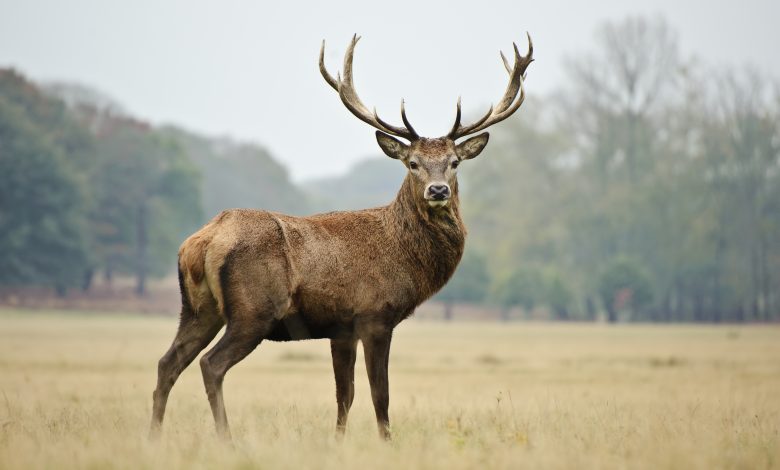
Important points about the temperate continental climate:
- What is? The temperate continental climate is the subtype of continental climate that is caused by the clash between air masses from the tropics and the polar zone.
- Where it is located? It is distributed mainly in the northern hemisphere where it can be observed through the following continents: America, Asia and Europe.
- What flora predominates? Forests are very common in this climate, finding various types, such as deciduous trees, conifers and also mixed.
- What fauna predominates? Characteristic species of this climate are: foxes, bears, deer, wolves, reindeer, squirrels, some reptiles, insects and birds.
- How long is the day and night? The passage of day and night is more or less regular during the time of the equinox, when they tend to last 12 hours each.
- Can human beings live in this climate? Human beings can live within the temperate continental climate without inconvenience because the conditions are suitable for adaptation.
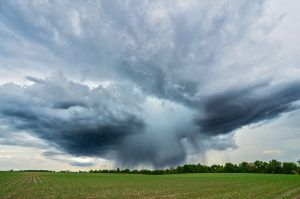 The temperate continental climate is part of the continental climate family that is distributed in those areas where there are temperate regions.
The temperate continental climate is part of the continental climate family that is distributed in those areas where there are temperate regions.
It occupies a large surface area within some continents, especially in what surrounds the middle areas of the northern latitude.
It is a climate that stands out for having a very evident difference in summer temperatures and what the arrival of winter brings with it. If you are looking to discover a little more about it and all that it implies, you came to the right place because here we will give you all the necessary information. Ahead.
What is the temperate continental climate?
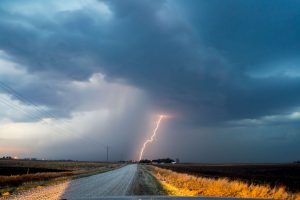 The temperate continental climate is the subtype of continental climate that is caused by the clash between air masses from the tropics and the polar zone.
The temperate continental climate is the subtype of continental climate that is caused by the clash between air masses from the tropics and the polar zone.
The 4 seasons are generated in it, being characteristic for the thermal amplitude that its zones pass throughout the year.
We refer to the presence of a very hot summer, while winters tend to be quite cold. The temperature and rainfall ranges will be influenced by each zone, finding some more arid than others and more or less humid.
Where is the temperate continental climate located geographically?
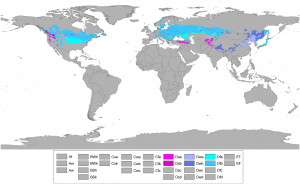 It is mainly distributed in the northern hemisphere where it can be observed across the following continents: America, Asia and Europe.
It is mainly distributed in the northern hemisphere where it can be observed across the following continents: America, Asia and Europe.
In America it tends to occupy the central western part of the continent and in Europe it develops in the eastern zone.
The most characteristic points are on the Asian continent where it covers both the northern part of Japan and the Korean peninsular area.
What characteristics does the temperate continental climate have?
The temperate continental climate is mainly characterized by the presence of air masses that give it a cool environment even in continental areas. However, there are some other features that we can highlight about it. These are:
- Seasons: there are 4 seasons, which are easy to differentiate by the atmosphere that is generated in each one. Summers are especially hot and humid because they are accompanied by precipitation. In the case of winters, they are cold and dry, with the presence of snowfall on some occasions, especially when temperatures are below 0º C.
- Precipitation: it occurs especially in the summer and there is a possibility that it will be accompanied by storms of great intensity. It is possible that some are generated in winter, even manifesting in the form of snow.
- Temperatures: the average is established in a range of 25 to 35º C, being much cooler in the areas where it is close to the coast. In winter it is possible that the temperature reaches -3º C.
- Types: Depending on the climatic variations that prevail throughout the year, this climate can be classified as cold temperate continental or warm temperate continental.
What flora predominates in the temperate continental climate?
 Forests are very common in this climate, finding various types, such as deciduous trees, conifers and also mixed.
Forests are very common in this climate, finding various types, such as deciduous trees, conifers and also mixed.
Among the most common species are oaks, cypresses, maples, pines, firs, among others. Thanks to the fact that rainfall occurs during the summer season, the trees have the opportunity to grow and maintain green and dense foliage.
However, for the winter, they are forced to enter the resting season to ensure they stay healthy and protected from low temperatures. In the temperate continental climate, flowering plants are also found, such as orchids or roses that embellish environments.
At the agricultural level, the vast majority of crops are maintained through specific sowing processes that are organized throughout the year, even taking advantage of winters.
What fauna predominates in the temperate continental climate?
 A rich and abundant fauna is found in the temperate continental climate, although this presents many changes throughout the year.
A rich and abundant fauna is found in the temperate continental climate, although this presents many changes throughout the year.
During spring, summer and mid-autumn they remain happy and pleasant with their surroundings, but preparing for the arrival of winter.
Whether it is storing food, migrating or going into the hibernation process, the fauna has managed to adapt to the scenario where it has had to live.
Characteristic species of this climate are: foxes, bears, deer, wolves, reindeer, squirrels, some reptiles, insects and birds.
How long is the day and night in the temperate continental climate?
 The passage of day and night is more or less regular during the time of the equinox, when they tend to last 12 hours each.
The passage of day and night is more or less regular during the time of the equinox, when they tend to last 12 hours each.
As winter approaches, the nights start to last longer and daylight hours get shorter.
For its part, as summer approaches, the days begin to become longer, reducing the duration of winter. On average, the longest period of each lasts 15 hours, while the shortest period is located at 7 hours.
Can humans live in the temperate continental climate?
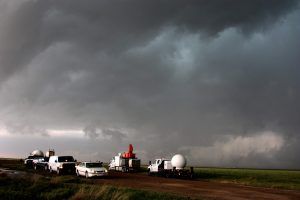 Human beings can live within the temperate continental climate without inconvenience because the conditions are suitable for adaptation.
Human beings can live within the temperate continental climate without inconvenience because the conditions are suitable for adaptation.
In the United States, many of the most populated areas have this climate, as is the case in New York.
As it allows the sowing and the raising of animals, it is perfectly possible to find the necessary sustenance for the populations. In addition, the appropriate conditions for the establishment of industries that help improve productive capacities are recorded.
One of the greatest inventions to deal with this climate is the use of greenhouses that allow crops to be maintained even in cold winters. Although it is known as a temperate continental climate, some authors may refer to it as a humid continental climate.
It is a climate that is concentrated, generally, in the central part of the continents where the air masses are responsible for lightening the temperatures. As it is closer to the coasts, the climate tends to be milder due to the support offered by ocean waters.
Did you already know the temperate continental climate? Does it look like any other weather?
Bibliographic references
- CLIMATE ELEMENTS AND FACTORS: CLIMATE, MJM RAMOS – 2009 – archivos.csif.es
- The mountains and the climate, L García de Pedraza – 1974 – repository.aemet.es
- Terrestrial Malacological Fauna of the Iberian Southeast, L Gasull – Bolletí de la Societat d’Història Natural de les Balears, 1975 – raco.cat
- Climate Change, IG López – 2019 – books.google.com
- Morphological and cytotaxonomic study of some Helicids of the Spanish fauna, especially from the central region, MT Aparicio Alonso – 2015 – eprints.ucm.es
- Evolution and current situation of fruit growing in the Alto Valle, E Kloster – Geographic Bulletin, 1988 – reveale.uncoma.edu.ar
Maybe you are also interested in:
- Koppen climate classification: [Concept, Characteristics and Types of Climates]
- Alpine Climate: [Characteristics, Flora, Fauna and Adaptability]
- Arid Climate: [Characteristics, Flora, Fauna and Adaptability]
- Continental Climate: [Characteristics, Flora, Fauna and Adaptability]
- High Mountain Climate: [Characteristics, Flora, Fauna and Adaptability]
- Climate of Argentina: [Characteristics, Flora, Fauna and Adaptability]
- Australia Climate: [Characteristics, Flora, Fauna and Adaptability]
- California Climate: [Characteristics, Flora, Fauna and Adaptability]
- Climate of Europe: [Characteristics, Flora, Fauna and Adaptability]
- Tundra Climate: [Characteristics, Flora, Fauna and Adaptability]
- Equatorial Climate: [Characteristics, Flora, Fauna and Adaptability]
- Cold Climate: [Characteristics, Flora, Fauna and Adaptability]
- Cold Weather: [Characteristics, Flora, Fauna and Adaptability]
- Mediterranean Climate: [Characteristics, Flora, Fauna and Adaptability]
- Ocean Climate: [Characteristics, Flora, Fauna and Adaptability]
- Polar Climate: [Characteristics, Flora, Fauna and Adaptability]
- Subpolar Climate: [Characteristics, Flora, Fauna and Adaptability]
- Subtropical Climate: [Characteristics, Flora, Fauna and Adaptability]
- Subhumid Temperate Climate: [Characteristics, Flora, Fauna and Adaptability]
- Temperate Climate: [Characteristics, Flora, Fauna and Adaptability]
- Humid Tropical Climate: [Characteristics, Flora, Fauna and Adaptability]
- Dry Tropical Climate: [Characteristics, Flora, Fauna and Adaptability]




